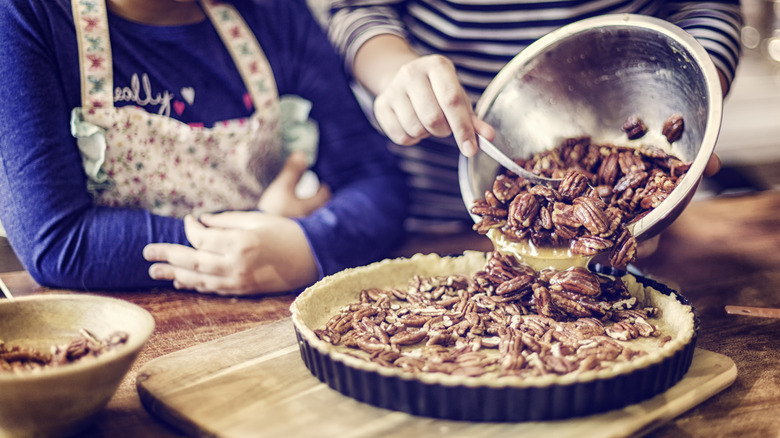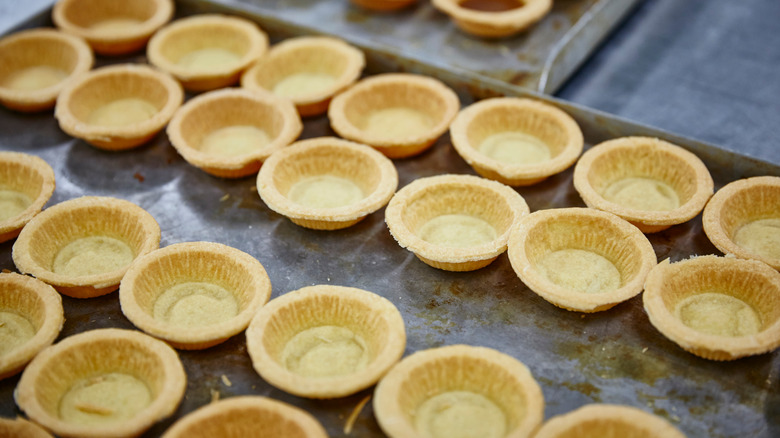Make Your Pie Dough In Bulk And Remain Stress-Free For The Holidays
When growers get too much of one crop or another, because they all become ripe at once, it's called a glut. Fall is full of gluts, many of them perfect for pie season — apples, cranberries, and pumpkins are all abundant between summer and winter. Gluts drive down produce prices — there's more supply than demand, so you can end up getting really good deals on pie fillings, but then you're left with a dilemma. Buy a store-bought pie crust that's not going to be as good as the perfectly ripe filling, or try making pie crust from scratch yourself, a process that can be stressful and time-consuming, and have mixed results. Instead of choosing between two bad options, create a glut of your own by making a big bulk batch of pie dough and freezing it.
If you're already someone who shows up to a potluck with pie, this is just a sensible use of your time. However, if you're a mere padawan starting out on the life of pie, it's still a great plan. Once the pie crust is made and safely stored, you'll start seeing potential pie fillings everywhere. Making a dessert from scratch goes from hours of planning to taking the crust out of the freezer in the morning, picking up some fruit on the way home, rolling the pastry out, filling the pie, and baking it. You can even freeze rolled-out pie crusts in the pan, if you have space and pans to spare, for even greater convenience.
Best practices for bulk-making pie dough
It's not just the ingredients that you're scaling up here, it's the processes too. Many of the secrets to the perfect pie crust lie in the temperature of the fats and water you use, as well as how much mixing is needed to bring the dough together. The less the fat melts, the flakier the dough will be. The more you mix the flour in the presence of water, the more gluten is developed, which makes crusts harder and chewier. If you're making a bulkier batch, things can take a little longer to mix, which means more time to melt, more gluten development, and more chances of a compromised crust.
To avoid this, take care to cool everything down. Use iced water, shred your fat before mixing so it combines quickly, and then put everything in the freezer so it's as chilled as possible before combining.
Take whatever you'll use now and refrigerate that, then divide the rest into individual pie crust portions — the exact size of which will depend on your preferred pie dish. Wrap each portion tightly in a double layer of plastic wrap (or a freezer bag) to avoid freezer burn. Remember to clearly label your pie dough with the date so you can use up old crusts first. King Arthur Flour says they should last up to 3 months in the freezer, so they should see you through the holidays. If they don't all get eaten first, that is!

